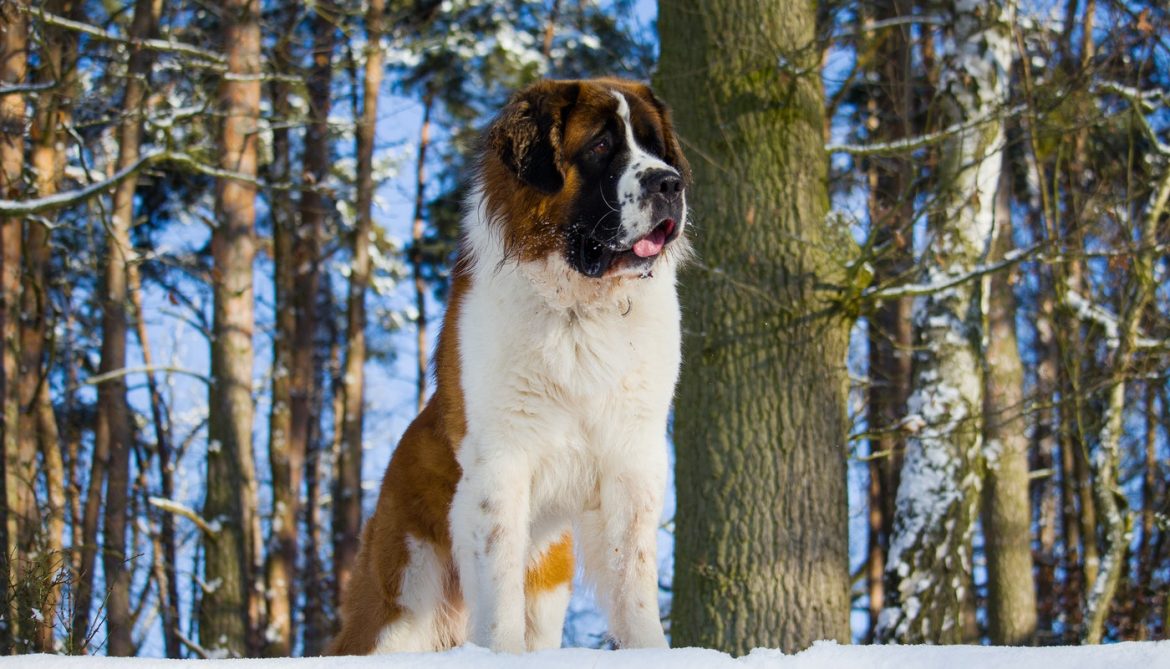Remember Nana from Peter Pan and Beethoven from the movie Beethoven? The adorable, caring, sensitive, and gentle Saint Bernard is a perfect example of this wonderful breed. When you look at Saint Bernard, the first thing most people notice is his charisma and boy, is he beautiful! These natural trailblazers’ sturdy body and head feature wrinkled eyebrows, a short snout, and enchanting dark brown eyes. A brave, noble breed known across the globe for its heroism and candour, Saint Bernards are close to being perfect pets!
History
Back in the year 1050, a monk named Bernard of Menthon started a hospice service to help the pilgrims on their way to Rome. The path to Rome was 8,000 feet above sea level with snow drifts as high as 50 feet. The monks developed a breed of dog with an excellent sense of smell and a keen desire to search and rescue travellers/pilgrims lost in the avalanche and snowdrifts. Thus, a breed known and praised for its nobility and loyalty was born.
About the Breed
Nutrition
SaintBernards do well on good quality dog food that is formulated for large/giant breeds. This helps to support rapid growth and development by meeting the optimum calorific and dietary needs. Moreover, it is essential to start the pup on health supplements like calcium and multivitamins to keep health problems that stem from deficiency and weakness at bay. Saint Bernards are particularly prone to a life-threatening condition called bloat, where the stomach twists. For this, feeding three small meals instead of two large meals is recommended.
Grooming
Grooming a Saint Bernard is a task- from drooling to shedding and trimming to brushing – you will soon find yourself becoming a professional groomer with your dog. Daily brushing and weekly deshedding can work out any mats, knots, or tangles using a slicker brush. Saint Bernards shed twice a year, which is when they need a trip to a professional groomer. As with all breeds, Bernies need their nails trimmed, teeth brushed, and ears cleaned once a week.
Exercise
Saint Bernards need exercise, but the type of exercise is essential. Vigorous exercise like running and jogging can put unnecessary strain on the joints and weaken their bones from a young age. However, activities like slow, long walks, swims, drafting, scent work, carting, search and rescue etc., can help give your pup the necessary exercise. Saint Bernards enjoy exercising best when he is with his family.
Training
Training a Saint is easy but must start early before the dog reaches half of his adult size, i.e., six months. They enjoy learning and take well to following the rules of the house – especially when there are treats involved!
Health
Deep chested dogs like Bernies develop bloat, along with hip dysplasia, arthritis, obesity, heart disease, respiratory problems, eye disease and when living in hot climates, life-threatening heat strokes. It is important to do your homework on where you live before bringing a Bernie home.
Temperament
Raised well through good obedience training and socialisation, Saint Bernards are nothing less than warm, fuzzy, cuddly bears. They are one of the best breeds with children – hands down!
We all want a Saint Bernard, don’t we?
As adults, they are calm, gentle, loving, and sensitive. But, as puppies, there will never be a dull moment at home!
Saint Bernards are good watchdogs because of how alert they are
They enjoy training and learning new things
They prefer cold weather and excel at drafting
This gentle giant may not be the best choice for you –
Saint Bernards cannot and should not live in hot weather
They need quite a bit of grooming and drool everywhere
They need lots of exercise to keep them fit
Saint Bernards suffer from separation anxiety and destructive behaviour when left alone.
A breed so majestic yet so gentle that it is too good to be true, Saint Bernards are what we call the strong, silent, charismatic type.
,

